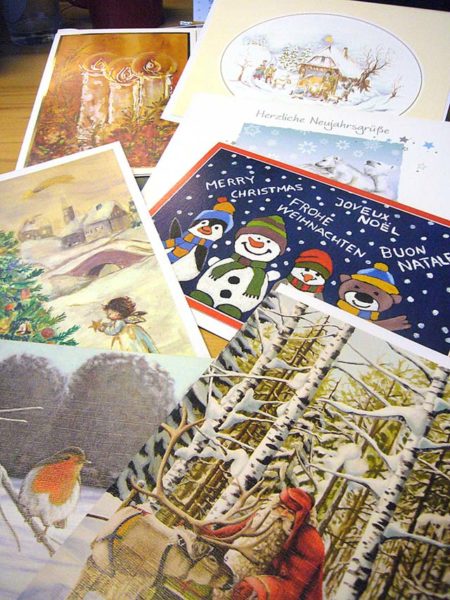
Even living in a modern world with electronic greeting cards, a big number of people all over the world still stick to the tradition of sending real holiday greeting cards to family members, relatives, friends and customers. The happy holidays greetings are combined with best wishes for the New Year.
Christmas cards have their origin in wishes for the New Year. In the 15th and 16th centuries, educated people gave each other printed and painted New Year’s songs and wishes.
Monasteries gave away single sheets of paper with a prayer printed on them for the New Year.
At first, the wish exchange was only a custom for adults from the upper class.
At the end of the 18th century, teachers made their students write Christmas and New Year’s letters. Then printers noticed there was a market for nice pre-printed Christmas cards. In England in 1843, painter John Calcott Horsley created the first Christmas card. It was made of three parts: in the middle, a family cheered to the receiver of the card; on the left, hungry people were fed; and on the right part, poor people received gifts to symbolize charity and helpfulness.
Horsley used stone plates to print his ideas on the cards and colored them by hand. And again, the sending of greeting cards was a privilege of the upper class since one card cost about one shilling.
For many years following, the cards did not show any Christmas scenes, but party scenes with people eating and drinking.
About 40 years later, the printing process became cheaper and more and more people could afford to send holiday greetings by mail.


